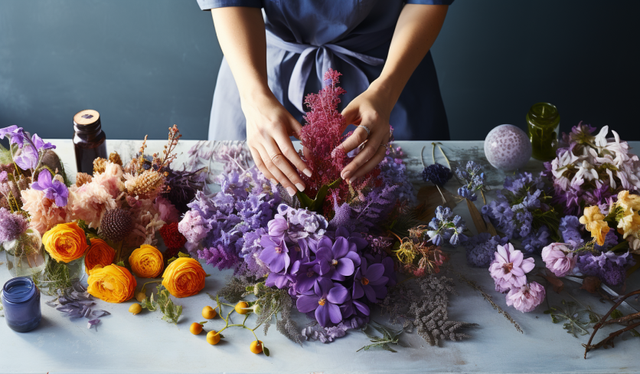Creative Flower Arrangement Ideas Anyone Can Try

Bringing nature indoors has long been a practice tied to serenity, artistry, and hospitality. Fresh blooms do not merely serve as decoration; they communicate mood, tone, and even intention. When considering flower arrangement ideas, the spectrum ranges from the traditional to the avant-garde, making floral styling both approachable and endlessly inspiring.
The Timeless Appeal of Symmetry
Classic floral compositions often embrace symmetry. This technique exudes balance and harmony, producing a display that feels polished and deliberate. Roses paired with lilies in equal proportion, set within a crystal vase, speak to refinement and timelessness. Such designs often suit formal settings, such as dining tables during celebratory dinners or reception halls hosting momentous gatherings.
Asymmetry and the Modern Aesthetic
In stark contrast, asymmetry has gained traction among contemporary designers. By allowing one side of the arrangement to extend further, often with branches or elongated stems, the result is striking and dynamic. This method feels less restrained and more natural, echoing the unpredictable beauty of wild gardens. Pairing tulips with eucalyptus or orchids with cascading ivy can offer an impression that is fresh yet unconventional.
Seasonal Inspirations for Everyday Spaces
One of the most accessible approaches to floral artistry is to draw upon seasonal availability. Spring might inspire soft pastels—peonies, daffodils, and lilacs—while autumn calls for warm hues of chrysanthemums, dahlias, and marigolds. Each season carries its own palette, and crafting arrangements that mirror the outdoors lends authenticity and charm to any space. Beyond the visual delight, seasonal choices are often more affordable and sustainable.
Monochrome Magic in Minimalist Design
Minimalism in floral art often manifests in monochromatic schemes. By selecting blossoms of the same hue, subtle variations in shade and texture emerge more prominently. White hydrangeas alongside pale orchids, or varying shades of pink roses, create understated elegance. This type of design works particularly well in modern interiors where simplicity and clean lines dominate.
Incorporating Non-Floral Elements
Modern floristry does not limit itself to blossoms alone. Feathers, dried wheat, pinecones, or even pieces of driftwood can be integrated into arrangements. Such additions create tactile depth and a sense of storytelling within the composition. Imagine sunflowers paired with golden wheat, evoking the imagery of late summer fields, or roses intertwined with branches of holly for a festive winter theme.
Compact Centerpieces with Bold Impact
Not all arrangements need to be grand. Compact designs, often housed in smaller vessels, can still command attention. A tight bouquet of ranunculus, arranged in a geometric ceramic pot, offers vibrancy without overwhelming its surroundings. These petite centerpieces are perfect for nightstands, office desks, or intimate café tables where space is precious but beauty is welcome.
Cascading Displays for Grandeur
For occasions demanding drama, cascading floral arrangements deliver impact. These designs use trailing vines, orchids, or ivy to create downward movement. Often placed on pedestals or tall vases, they enhance formal events such as weddings, galas, and milestone celebrations. Their flowing silhouettes suggest abundance, movement, and organic elegance.
Playful Experimentation with Containers
The vessel itself plays a pivotal role in floral styling. Moving beyond glass vases, one might consider antique teapots, rustic baskets, or even hollowed gourds as unique bases. Each choice changes the narrative of the arrangement—whimsical, rustic, or avant-garde—demonstrating that creativity extends beyond the flowers themselves.
Cultural Influences in Floral Art
Global traditions offer endless inspiration for floral artistry. The Japanese art of Ikebana emphasizes space, line, and simplicity, often with minimal blossoms arranged to highlight form and emptiness. European arrangements, conversely, frequently prioritize fullness and lush abundance. Exploring different cultural methods provides not only design variation but also deeper appreciation for the universality of floral beauty.
The Therapeutic Dimension of Arranging
Beyond aesthetics, working with flowers offers a therapeutic benefit. The act of selecting stems, trimming leaves, and mindfully placing each bloom can quiet the mind, much like meditation. Engaging with colors and fragrances stimulates the senses, fostering relaxation and creativity. For many, arranging flowers becomes less about the final result and more about the calming process.
Bringing Personality into Each Creation
Ultimately, floral artistry should reflect personality. Some may prefer bold, daring arrangements with exotic blooms, while others find joy in understated simplicity. The key lies in experimentation—trying new color palettes, unusual vessels, or unexpected combinations until a personal signature emerges.
Floral arrangements are more than decorative flourishes; they are expressions of artistry, culture, and individuality. Whether seeking balance through symmetry, embracing freedom in asymmetry, or experimenting with eclectic containers, anyone can create displays that resonate. By blending tradition with imagination, every arrangement becomes a narrative—one that can uplift spaces, moods, and moments alike.




